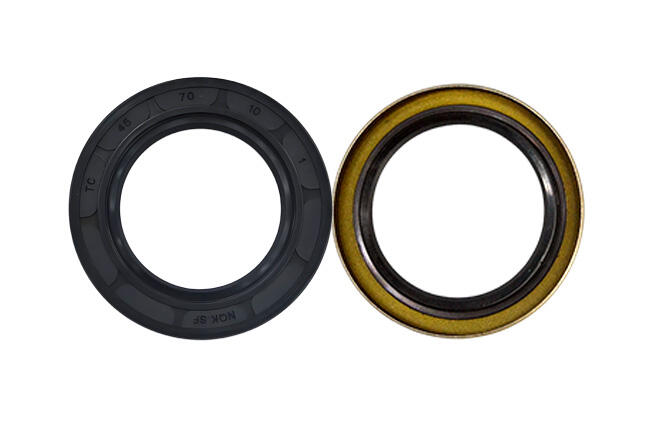In the long-term operation of rotating machinery, the health of the oil seal almost dictates the stability of the entire system. Whether it's a motor, pump, reducer, or precision transmission, seal failure, lubricant leakage, or the ingress of external contaminants often results in not only reduced performance but also potentially cascading failures such as bearing damage and excessive temperature rise. Therefore, engineers must have a clear understanding of the structural characteristics of oil seals during the design and maintenance phases. The R23 double-lip oil seal and the TB Frame Oil Seal are two structural types commonly encountered in industrial settings, yet exhibit distinctly different characteristics.
1. Structural Feature Comparison
The R23 double-lip oil seal is easily recognizable by its appearance. It features a metal frame covered in rubber, with an outer diameter that fits snugly within the seat bore. A spring embedded in the primary lip ensures uniform contact pressure with the shaft surface, while the secondary lip acts as a protective barrier, effectively blocking the ingress of fine impurities such as dust and sand. The rubber-coated outer diameter also maintains good sealing performance even with imperfect seat bore roughness or slight eccentricity.
The TB frame oil seal offers a more robust design. It features an all-metal casing with a rubber lining for direct contact with the shaft. The primary lip is also spring-loaded to stabilize the seal, while the secondary lip acts as a dust barrier. The highly rigid metal casing makes it more stable on large-diameter shafts, under high mechanical stress, or in environments requiring housing strength.
2. Material and Operating Condition Compatibility
Both oil seals can be made with a variety of rubber materials, with the appropriate formulation selected based on the operating conditions:
NBR: Suitable for standard lubricants and moderate temperatures;
FKM: Highly resistant to high temperatures and chemicals;
ACM: Exceptional performance in high-temperature automatic transmission environments;
EPDM/HNBR: Suitable for applications requiring high weather resistance or high pressures.

The metal components also differ in material choice. The R23 type generally features a carbon steel casing covered in rubber; the TB type, when used with corrosive media, can be made of stainless steel for improved corrosion resistance.
3. Performance and Application Differences
Comparing the two types of seals installed in similar equipment, the R23 offers superior pollution protection, especially in environments with high dust concentrations, where the auxiliary lip provides longer-lasting protection. The TB type, on the other hand, offers superior structural strength and dimensional stability and is often used in applications requiring high housing strength, such as large gearboxes and marine propulsion systems.
In terms of installation requirements, the R23 type has a higher tolerance for seat bore machining accuracy, maintaining sealing performance even with slight deviations; the TB type requires even higher machining precision to ensure long-term sealing stability.
4. Industry Application Examples
· R23 type: Commonly used in small and medium-sized machinery such as motors, pumps, agricultural machinery, household appliances, and hydraulic equipment.
· TB type: Mostly used in heavy-duty applications such as metallurgical equipment, wind turbines, construction machinery transmission systems, and marine propulsion systems.
5. Selection Recommendations
When selecting a seal, consider factors such as shaft diameter and seat bore dimensions, operating environment (dust, humidity, and chemical media), temperature range, speed, and pressure. For example, wind turbine main shafts often exhibit high levels of dust and large shaft diameters. In these cases, the TB-type stainless steel housing is preferred. For agricultural machinery drive shafts, the R23 type double-lip design effectively blocks mud and sand, extending service life.
There's no absolute superiority or inferiority between the R23 double-lip oil seal and the TB skeleton oil seal; they are two approaches to addressing different operating conditions. Understanding their structural differences and application characteristics, and making an appropriate choice based on actual on-site conditions, will ensure long-term stable and efficient equipment operation. When professional judgment and customized solutions are required, Shanfeng's engineering team can provide comprehensive support from selection to implementation.
 Hot News
Hot News